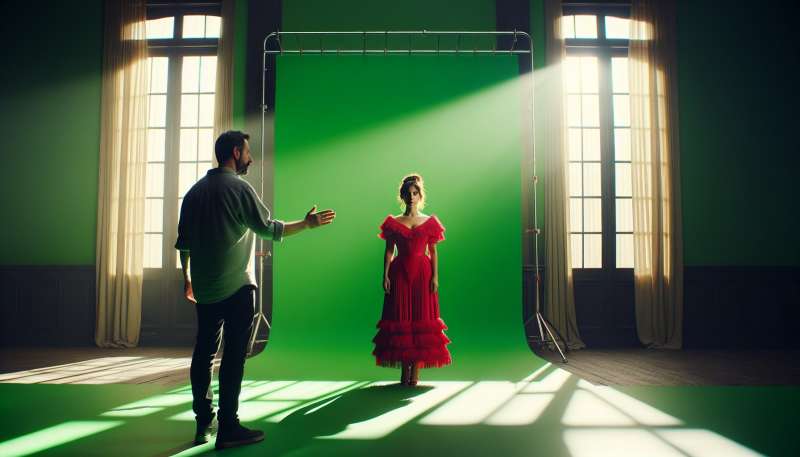
What Is Green Screen?
Green screen technology, or chroma keying, allows for the compositing of two images by removing a color background. It's widely used in film to add backgrounds that are not physically present.
Why Green Specifically?
Green is favored for backgrounds because it doesn't match natural skin tones or hair color, minimizing the chance of keying out parts of the actors. It also contrasts well with most costume colors.
Color Separation Overlay
The technology originated as 'Color Separation Overlay' in the 1930s, using a blue screen. It evolved with film technology improvements, shifting predominantly to green due to digital cameras' sensitivity to the color.
Digital Advancements
Digital green screens provide cleaner compositing than blue screens. They require less light and are less grainy, which makes keying out backgrounds in post-production more accurate, especially with high-definition cameras.
Lighting Challenges
Proper lighting is crucial; it must be uniform to avoid shadows or variations in color. Spill suppression is also used to eliminate green reflections on subjects, which can hinder the keying process.
Beyond Entertainment
Aside from movies and TV, green screen technology is used in weather broadcasts, virtual reality, and video games for immersive environments. It's also popular in educational settings for creative learning.
Future of Chroma Keying
Advancements include real-time keying for live broadcasts and the integration with AI to improve edge detection around subjects, making the technology even more seamless and opening new possibilities for creators.
What does green screen technology enable?
Sound removal in post-production
Compositing two images together
Filming in extreme weather
Company